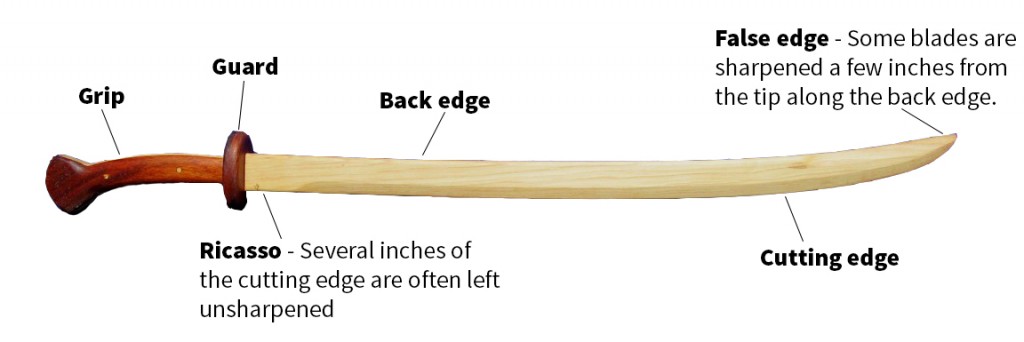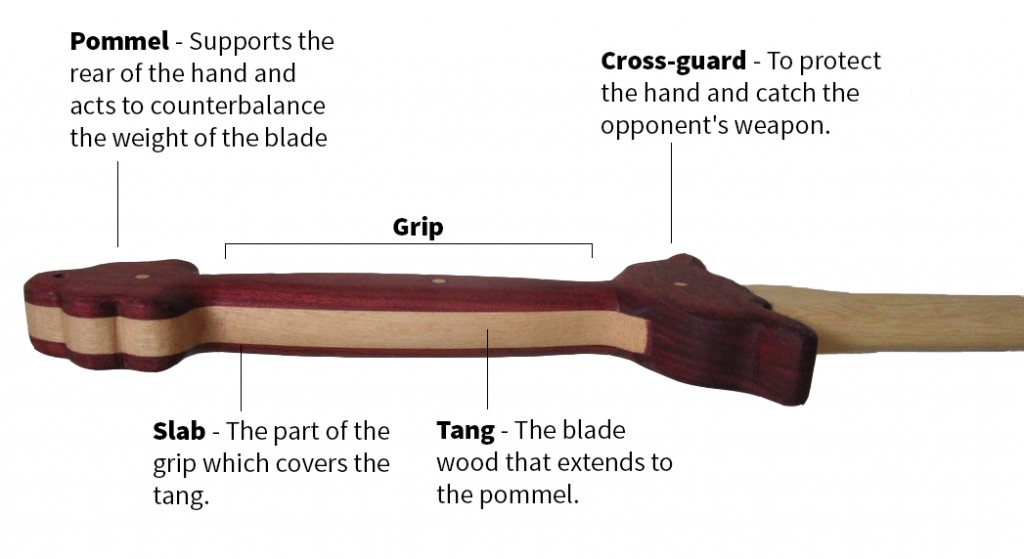FAQ
How should I care for my new training weapon?
-
All Raven Studios hardwood training weapons are finished with a linseed and tung oil blend and then hand buffed with a custom wood finishing
paste wax (made from bees wax and almond oil) to preserve, strengthen, and protect the wood as well as to bring out its natural beauty.
-
Your training weapon is sanded smooth when finished, but please note that wood naturally expands and contracts with changes in temperature and
moisture. You may notice when your item arrives or after it has been in its new environment for a while, that the glue in the seams of the
wood has “squished” out a bit causing a slight ridge or bump. The natural movement of the wood may cause this to happen... not to worry, this
is easily remedied! Just take a sharp knife, utility knife or razor blade and gently scrape the seams. Do not cut into the wood, simply
scrape the blade edge over the seams and they will be silky smooth again.
-
Avoid exposing wood to moisture and temperature extremes. Leaving a sword or staff in a car, lying it on wet grass, or storing it by leaning
it up against a wall for long periods of time, are a few ways that can cause the wood to warp.
-
For weapons that are going to be used for forms and solo technique practice only: Oil wood a few times per year using a light oil such as
lemon or furniture oil. Furniture or paste wax can also be used to restore lost luster.
-
For weapons that are going to be used for sparring and contact drills: Oil wood once every month for about a year using Boiled Linseed oil
or Tung oil (clear or natural), found in most hardware stores. After that, oiling a few times a year should keep your weapon in top shape.
-
To oil: If needed, first lightly sand the wood with 120 grit sandpaper to smooth out any dents and splinters. Finish sanding with 220 grit
sandpaper. Oil the wood following the oil container instructions very carefully. Be careful, allowing the oil to sit on the wood too long can
cause it to gum up and get sticky. After wiping off the excess oil, let the blade sit overnight to allow the oil in the wood to cure
completely before using. WARNING - Follow the instructions on the oil container regarding the correct disposal of oil soaked rags. They CAN
spontaneously ignite! After the oil has cured, a wood finishing paste wax can be applied to further protect the wood.
-
SAFETY FIRST - Always inspect your training weapon for damage before and after each use. With proper use and maintenance your wooden training
weapon should last a very long time.
You say your swords are constructed with a full tang. Could you explain what is meant by tang?
The following description refers to wooden sword or knife construction. The tang of a blade is the part that goes into the
handle. When viewing a sword that is constructed with only a partial or hidden tang, you can see that the tang is pegged or
inserted completely inside the handle (you can’t see how big or small the tang is). When viewing a sword constructed with a
full tang, you can see that the tang is sandwiched (laminated) between two handle pieces, called slabs. In this way, it is
highly unlikely that the blade will loosen, crack, or break off where it meets the guard and handle.
How do your wooden swords hold up to contact or sparring drills?
Raven Studios’ wooden training weapons can be used not only for forms and solo technique practice, but they are also very well
suited for partner training. I designed them to be durable as well as comfortable and well balanced. They are fashioned from
the most impact resistant woods I can find. The swords are constructed with a full tang and the guards are securely locked in
place and can not slide down the blade or handle. The grips are shaped for comfort and control. All training swords are
finished with a linseed and tung oil blend, which penetrates into the wood to provide a tough surface (much stronger than a
surface treatment such as varnish or urethane). Then the wood is buffed with a paste wax for even more protection from the
elements. Having said all of this, with contact, any wood is still subject to denting, splintering, or cracking etc. Even
wooden baseball bats (traditionally made from ash and maple) have a limited life time. Keep in mind that any sword (wood or
steel) used “baseball bat” style, directly against an incoming force, will have a limited life as well. My goal is to create a
training sword that will both accompany you during endless hours of martial arts training and be your cherished companion for
many years to come!
How do I determine which size Jian is right for me?
Determining the proper length of a jian varies from school to school. Your martial arts instructor is the best person to
answer this question because different disciplines prefer different methods. For example, some say the length of the entire
sword should be equal to the distance measured from the floor to your navel. Others prefer the following method; stand with
your arms hanging at your sides and have someone measure the distance from your wrist to one inch above your ear and the
“blade” should equal that distance. Still others believe that since historical sword blades averaged about 29″ in length, that
is the length that should be used regardless of the user’s height. The preferred method however, should be determined by your
martial arts instructor.
Can you explain how you measure the various parts of your swords, hilt length and POB for example?
The blade length is measured from the tip of the blade, to where it starts at the blade side of the guard. The hilt length
includes the guard, handle, and pommel. It’s measured from the end of the pommel, to the blade side of the guard. The point of
balance (POB) is measured from the blade side of the guard, to the balance point. The blade width is measured where the blade
meets the guard. The handle length is measured from the handle side of the guard, to the handle side of the pommel (unless
otherwise indicated).
Do you make custom wooden swords?
Yes. If you would like one of our standard swords with your own unique specifications; guard or hilt design, specific point of
balance, blade thickness or taper etc., or you’d like a style of sword not found on this website, supply a written description
(photos or drawings are very helpful) and I’ll let you know if it’s something I can make for you. Additional charges may apply
for custom training items so please contact carinac@little-raven.com for a
quote. (No fantasy or cartoon sword requests please. R.S. trainers are not toys, they are designed for serious martial arts
training.)
Do any sword distributors carry your products?
A number of sword distributors have requested to carry Raven Studios products and although I truly appreciate the kind offer,
I have had to turn them down. Raven Studios products are not mass produced, they are constructed per order. I want to ensure
that each customer receives exactly what they want and I personally work with each one to reach that goal. I believe having
direct contact with customers is essential to the success of Raven Studios.
You've changed your wooden dummy ordering process. Can you explain the process?
A waiting list has become a necessary part of the wooden dummy ordering process. I am able to make about 6 to 7 wooden dummies
per year. There is usually anywhere from 3 to as many as 15 people on the waiting list. When I am ready to start the next jong
I will contact the person at the top of the list. If they are ready to place their order, I will arrange for payment and start
their jong.
To inquire about placing a wooden dummy order, or to ensure a place on the waiting list, please contact Raven Studios at:
carinac@little-raven.com
Have you stopped making the dummy stands?
I no longer make dummy stands. Since there are a few stand manufacturers on the market and making the dummies is my specialty,
I am able to make more dummies per year if I don’t make the stands.
The Parts of the Sword
* Please note, I do realize that various cultures and disciplines use different names for the parts of swords. The
descriptions below are to be used as basic guides for users of this site.

The Parts of the Sword Hilt (guard, handle & pommel)



